Discover Thailand (15): The population and demographics
The Thai population consists of approximately 69 million people and is one of the fastest growing populations in Asia. Thailand is a diverse country, with people of different ethnic origins, including Thai, Chinese, Mon, Khmer and Malay. Most people in Thailand are Buddhists, although there are also small minorities of other religions such as Islam, Hinduism and Christianity.
Thailand is a country with a diverse demographic profile. The population is mainly made up of Thais, who make up the majority of the population and live almost everywhere in the country. In addition to the Thais, there are also significant communities of Chinese, Cambodians, Laotians, Malays and other Southeast Asian groups in Thailand. There are also smaller communities of other ethnicities in Thailand, including Indian, European, African and Hispanic groups. These communities mainly live in the major cities, such as Bangkok and Chiang Mai. Some parts of Thailand, such as the border areas with Laos, Cambodia and Myanmar, are also home to ethnic minorities who maintain their own cultural and linguistic traditions. These groups include the Hmong, Karen, Akha, and Yao, among others.
The largest ethnic group in Thailand is the Thai, who make up about 75% of the population. The Thai originate from the central and northern parts of Thailand and have a long history in the country. Their culture has been heavily influenced by the nearby countries of Laos, Cambodia and Malaysia.
Educational attainment
Education levels in Thailand have steadily improved over the past few decades. According to figures from the Thai Bureau of National Statistics, about 95% of the Thai population has completed at least a primary school education. The proportion of people with a high school education or higher has also increased, although there is still a large difference between urban and rural areas. There are several reasons why the level of education in Thailand has improved. One of the main reasons is increased access to education. In Thailand, primary education is free and compulsory for all children between the ages of 6 and 12. This has led to an increase in the number of children attending school and a decrease in the number of illiterates.
Several initiatives have also been launched to raise the level of education in Thailand, such as improving the quality of education, strengthening the capacity of teachers and promoting scientific and technological research. While there are still challenges such as large class sizes, lack of resources and inequality in access to education, education levels in Thailand continue to rise.
Average income and disposable income
The average income in Thailand has increased in recent years. According to Thai statistics offices and international recruitment agencies, the average salary in Thailand in 2022 is about 15.000 baht per month or 417 euros. At the same time, in the capital Bangkok they earn an average of 22.274 baht. In the private sector it is 21.301 baht and in the public sector it is 30.068 baht. Although the average income in Thailand has increased, there is still a big difference between urban and rural areas. Average incomes tend to be higher in urban areas than in rural areas due to higher employment and increased demand for labor in the cities.
Thailand's disposable income is the portion of income that people can actually spend on goods and services, after deducting taxes and other costs. According to figures from Thailand's Bureau of National Statistics, household disposable income in Thailand had also increased about 2021% in 3 compared to the previous year. Although disposable income has increased in Thailand, there is still a big difference between urban and rural areas.
The minimum wage in Thailand varies by province. According to figures from Thailand's Bureau of National Statistics, the minimum wage in 2021 was about 300 baht per day, which equates to about $8,30. The minimum wage is revised every two years based on inflation and other economic factors. The minimum wage applies to all workers in Thailand, regardless of their level of education or profession. It is used as a reference point for wages and salaries and aims to ensure that employees have a reasonable income to live on.
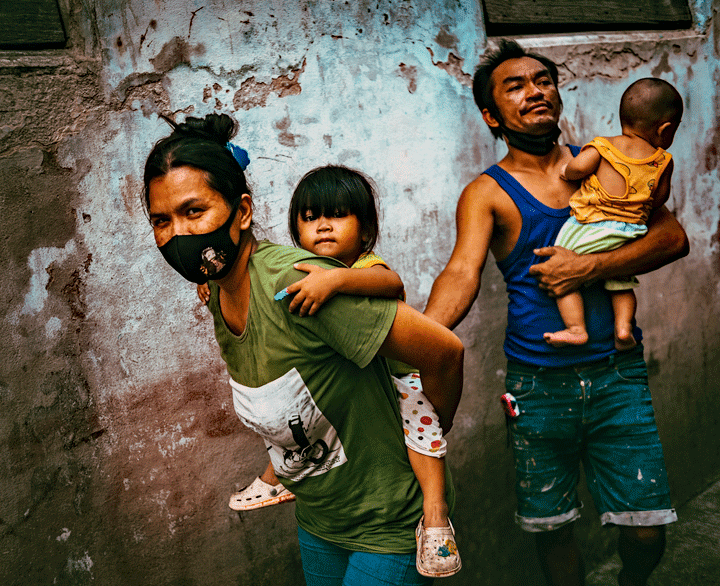
(Pavel V. Khon / Shutterstock.com)
Poverty among the population
Although Thailand is a developed country with a strong economy, there are still major differences between urban and rural areas in terms of education, healthcare and wealth. In some parts of Thailand, living conditions are difficult and people live below the poverty line. Poverty is therefore a major problem in Thailand. According to figures from the Thai Bureau of National Statistics, about 11% of Thailand's population lives below the poverty line, which amounts to about 7,7 million people. The poverty line in Thailand in 2021 was about 15.000 baht per year, about $420. This is the income below which a household is considered poor and eligible for government assistance and other forms of assistance. It is important to remember that the poverty line in Thailand is a guideline and a household's income is not the only factor in determining whether it is poor. Other factors, such as the number of people in the household, age of members, health status and living conditions, can also influence a household's poverty status.
Although Thailand's economy has grown steadily in recent decades, much of the population remains behind. This is especially the case in the remote areas and in the big cities, where the cost of living is high. Poverty in Thailand is often the result of a combination of factors, including low levels of education, lack of access to health care and financial services, and unstable working conditions. Migrant workers are especially vulnerable to poverty, as are small farmers who suffer from low prices for their products and bad weather conditions. To address poverty in Thailand, the government has launched several programs and initiatives, including providing financial assistance to the poor and vulnerable, improving access to education and health care, and promoting sustainable agricultural practices. Poverty therefore remains a major challenge for Thailand.
Household debts
Household debt is a major problem in Thailand. According to figures from Thailand's Central Bureau of Statistics, households in Thailand had an average debt of about 2021 baht in 150.000, which equates to about $4.200. This is an increase of about 5% compared to the previous year. There are several reasons why households in Thailand are in debt. One of the main reasons is the high usage of credit cards and personal loans. Many Thai households use these financial products to boost their lifestyle or to cover unexpected costs. However, this can lead to higher debt and financial problems if households are unable to repay these loans.
Other reasons for household debt in Thailand include low incomes, inadequate financial planning and uncontrolled spending patterns. To tackle household debt, the Thai government has launched several initiatives, including promoting financial education and establishing help and advice programs for households experiencing financial difficulties. It is important to keep working on ways to reduce household debt in Thailand and ensure that households are able to live in a sound financial way.
Demography
One of the most important demographic factors has been declines in birth rates in recent decades, which have led to a decline in the proportion of young people in the population. This can be attributed to several factors, such as improved contraceptives, increased urbanization and increasing female labor force participation. Another important factor is life expectancy. In Thailand, life expectancy has increased due to improved healthcare and lifestyle. This has led to an increase in the proportion of the elderly in the population. Migration is also an important demographic factor in Thailand. There is a significant movement of people from the remote areas and small villages to the big cities, which can lead to an increase in population density in the cities and a decrease in the rural areas.
aging
The aging population is a phenomenon that Thailand has to contend with. According to figures from Thailand's Bureau of National Statistics, the share of people over the age of 60 in Thailand's population increased from about 2005% to about 2021% between 10 and 20. This means that there are more and more elderly people in Thailand and the proportion of young people is decreasing. Thailand's aging population is the result of a number of factors, including low birth rates, improved health care and increasing life expectancy. The aging population is causing a number of problems, such as higher healthcare costs and a decrease in labor participation. To address these challenges, the Thai government has launched several initiatives, including establishing pension and care systems for the elderly, promoting healthy lifestyles and strengthening social cohesion.
The Isan
The Isan is a region in the northeast of Thailand. The Isan is Thailand's second largest region and has a population of approximately 21 million people. It is a rural region with a low population density and a traditional agricultural economic profile. The people of the Isan are originally of mainly Laotian descent and have their own unique cultural and linguistic traditions. Many people in Isan speak a Lao dialect, although the Thai language is also widespread. The Isaan also has a rich traditional culture, with unique music, dance, costumes and celebrations.
The economy of Isan is mainly based on agriculture, with rice, maize, sesame and tobacco as important products. There are also important industries, such as textiles, food processing and building materials, in the region. Although Isan's economy has grown in recent decades, poverty remains a major problem in some parts of the region. The Isan is also known for its beautiful nature, with vast rice fields, long rivers, dense forests and historic temples. It is a popular destination for tourists looking for an authentic and peaceful holiday experience in Thailand.
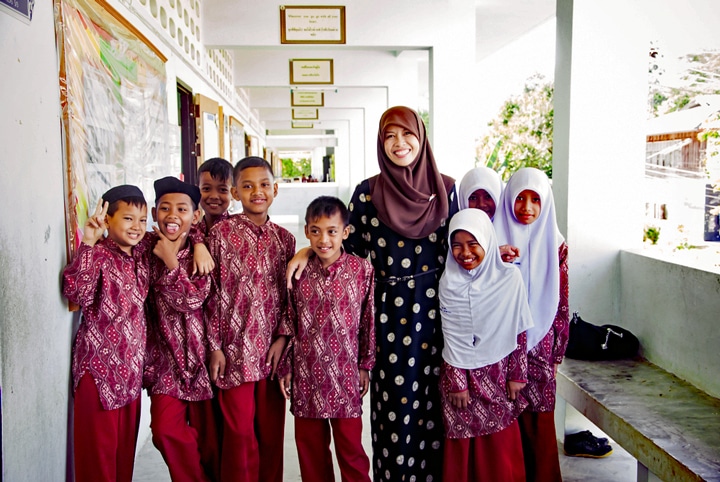
(teerapat punsom / Shutterstock.com)
Muslim community in the Southern provinces
Thailand's southern provinces, including Pattani, Yala, Narathiwat, and Songkhla, have large Muslim communities. By some estimates, Muslims make up about half of the population in these provinces. The Muslim community in the southern provinces is mainly of Malay descent and has its own unique cultural and linguistic traditions. The Muslim community in the southern provinces has long experienced social, economic and political inequality and discrimination. This has led to tensions between the Muslim community and the government and contributed to a violent conflict situation in the region.
To address the conflict, the Thai government has launched several initiatives, including establishing dialogue platforms between the government and the Muslim community, improving access to education and healthcare, and promoting economic development. While progress has been made, the conflict remains a major challenge for Thailand.
Friendly and welcoming
The Thai people are friendly and hospitable and are known for their love of parties and music. Their religion is Buddhism, which plays an important role in their daily life and culture. The Thai people are also very proud of their country and are strongly connected to the nature and natural beauty of Thailand. In general, the Thai people are an important part of Thailand's cultural and economic identity. Their friendliness, hospitality and pride in their country make them unique and special.


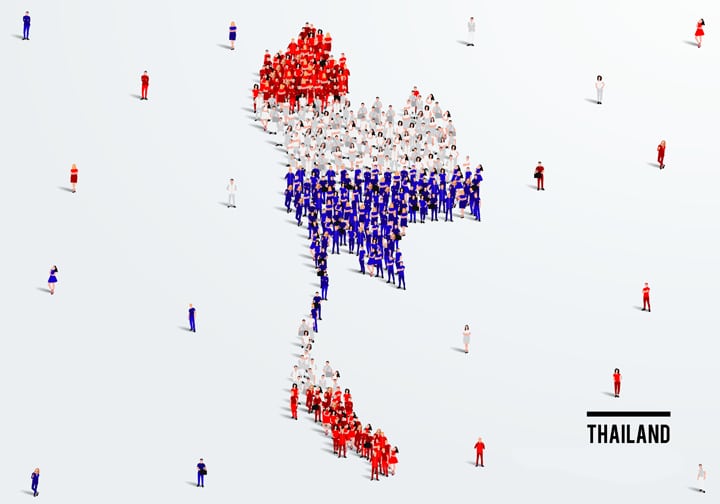
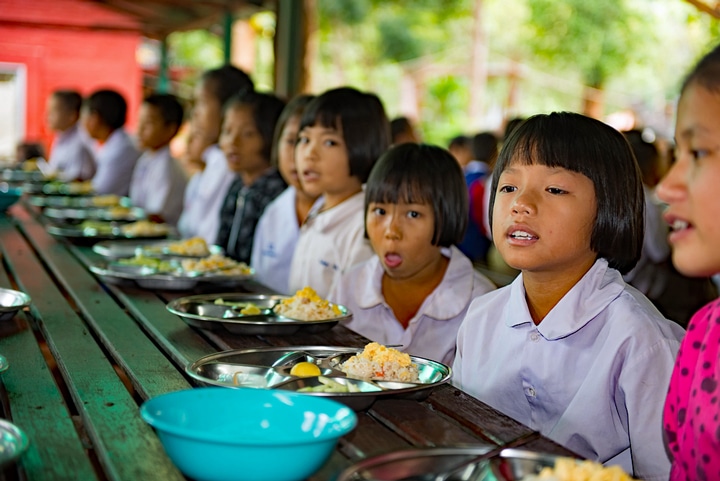
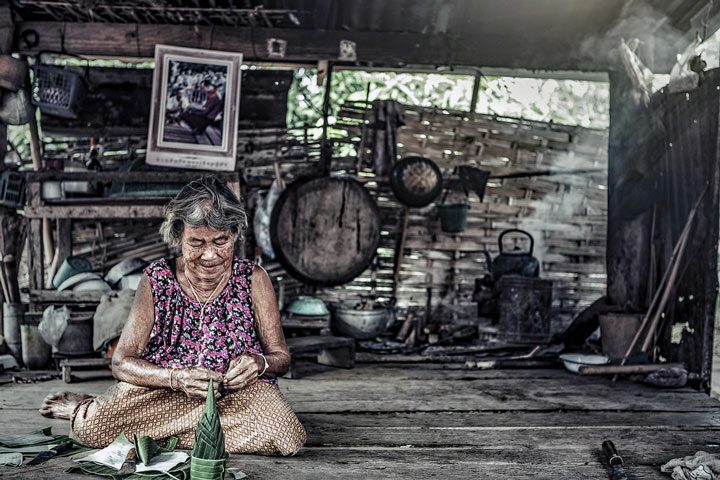
Very good article.
This already clearly answers Emma's question regarding her appeal: 'Poverty in Thailand'.
If she reads this, she already has a perfect basis to process in her assignment.
A good article indeed.
However, what I experience (and my Thai wife also agrees) is that the friendliness of the Thai people is disappearing anyway. This phenomenon is less noticeable among the older population, but youth has changed a lot in recent years.
I have no idea what the real cause of this is, I suppose the decrease in poverty has something to do with it. The rise of the internet, especially social media, is perhaps also a reason that everyone lives more and more in their own bubble without taking others in society into account.
In Thai culture, parents were invariably held in high esteem by their children. That is also not always the case anymore. I know of many examples where the children no longer look after their own father and mother, but have nothing short of themselves. This selfish behavior is emerging more and more.
The togetherness and helpfulness is often lost. The quest for wealth, jealousy for what others possess and wanting more and more for yourself cause a lot of problems. It is indeed much better for the average Thai, poverty is decreasing, education is a lot better. All this is the breeding ground for a society where it is every man for himself. It is a pity, but Thailand is rapidly changing.
Change is part of life, which is sometimes a pity, but ultimately the Thais decide together which way the country will go. These changes will have positive aspects (better socio-economic conditions) as disadvantages. Where one is more self-reliant, it gives the chance to have less intertwined / close ties with the people around you. Of course, that also has its advantages and disadvantages (less lurking eyes, but therefore also fewer contacts).
It is, like any country, a country full of different, special and less special people. And like every country, it is also a hotchpotch of all kinds of origins and cultures (the Thai does not exist). The change continues. The world is getting smaller and smaller and we will see what the future holds.
A few years ago, Prime Minister Prayut Ubon Rachathani visited. He met an opponent of his rule and asked him "Are you a Thai?"
Who are those Thais? Many are dismissed as 'not really Thai' or really not Thai at all. Many have ancestry from other countries, a religion other than Buddhism, and do not speak Standard Thai. They are often discriminated against.
A Thai is a person with Thai nationality, after that we can talk about other aspects of their person and life.
And my son has two nationalities. Is he a real Thai?
There is also no 'Thai culture'. There are many cultures in Thailand.
“…a religion other than Buddhism and do not speak Standard Thai. They are often discriminated against.”
Or the wrong political views. Some want a republic. Those are not Thai.
Definitely good article
Primary education up to the age of 12 is free, but does that also apply to school uniforms and books?
At primary school you must contribute to books and clothing yourself. It costs us 5000 baht and clothes are bought on growth, which is just under 15 baht per day. If you can make a child, then you shouldn't have to be difficult to invest that gigantic amount to demand an old-age provision from the children.
Just to pick up on another comment. I rather have the feeling that children themselves, because of their education and knowledge of social media and the internet, feel that their parents are quite a bit stupid and those same parents remain stuck in the old and then it is not incomprehensible to get some kind of aversion and to fob off parents with a tip as soon as they start their working life themselves.
It is also a parental responsibility. Working crazy and depriving yourself to let your daughter go to a university and eventually the level of education turns out to be good enough to become a restaurant clerk. Such a shame all, but yes, they do it themselves and stand there.
Shoes cost a few hundred baht, ditto the clothes. Book at most a few thousand baht per year. So costs almost nothing, even at private schools like my children's I pay these kinds of amounts. Uniforms are a godsend because you don't have to choose or show off what a child should wear and you save money on regular clothing so clothing in the form of a uniform is no extra cost.